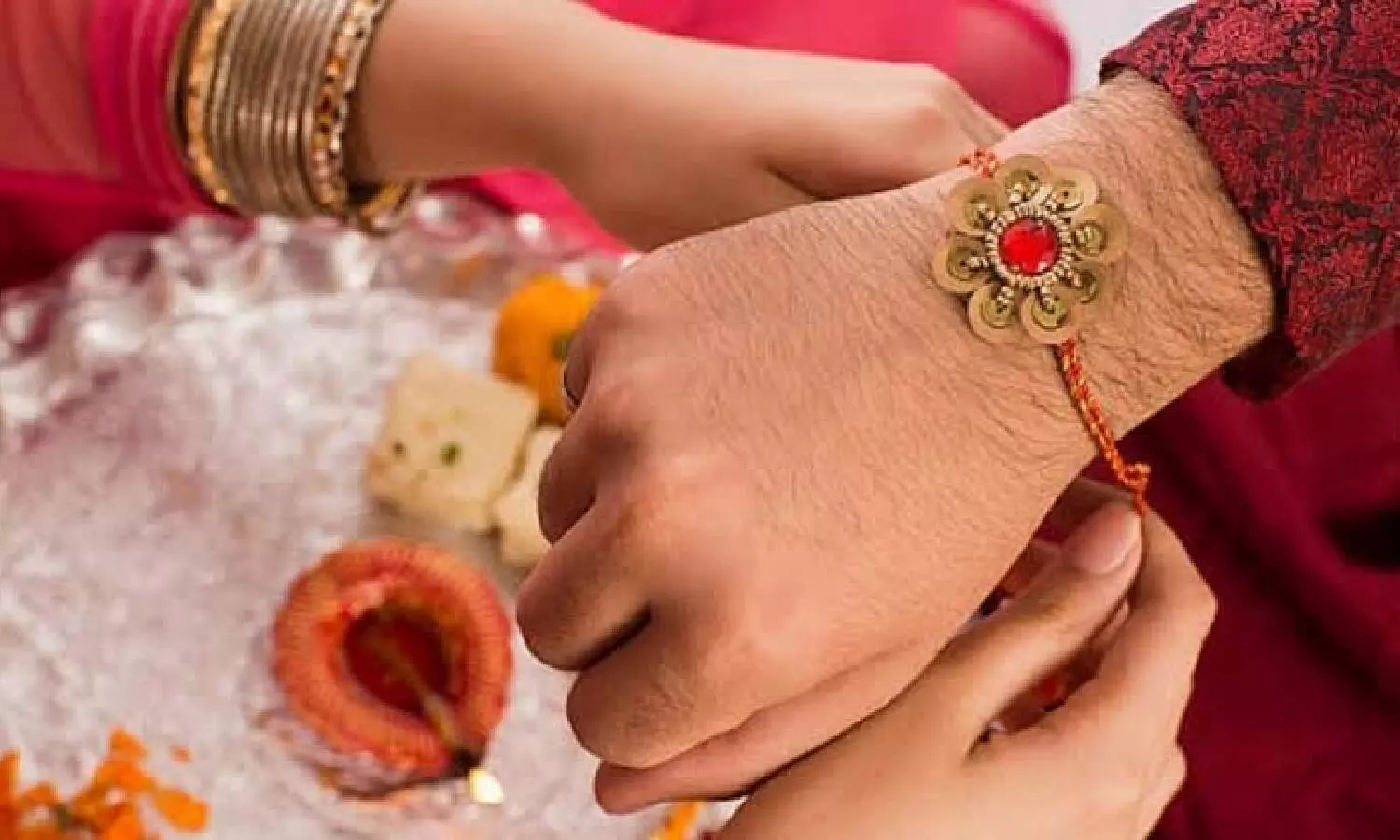Happy Raksha Bandhan: All you want to know about festival and bhai-behen camaraderie
Raksha Bandhan has expanded beyond the traditional brother-sister relationship. People tie rakhis to cousins....
By Newsmeter Network
Hyderabad: Raksha Bandhan, often shortened to Rakhi, is one of India’s most recognised festivals, celebrated across states and communities. While today it is largely seen as a day when sisters tie a thread on their brothers’ wrists in exchange for gifts and promises of protection, its origins and historical journey reveal a more layered meaning, one tied to politics, alliances, and social reform.
Roots in Ancient Texts and Rituals
The concept of a sacred thread signifying a protective bond can be traced to ancient Hindu scriptures. In the Bhavishya Purana, there is a reference to Lord Indra’s wife, Indrani, tying a protective thread on Indra’s wrist before he went to battle against the demons. This thread was believed to grant strength and protection.
Historian Dr. Meera Sanyal speaking to Newsmeter explains,
“In earlier times, the Rakhi was not limited to the brother-sister relationship. It was a ceremonial thread tied to signify a protective duty, even between kings and priests, or rulers and their subjects.”
Rani Karnavati and Humayun: A Political Alliance
One of the most cited historical anecdotes linking Raksha Bandhan to royal courts is the story of Rani Karnavati of Mewar and Mughal Emperor Humayun in the 16th century. Facing an imminent attack from Bahadur Shah of Gujarat, the widowed queen is said to have sent a rakhi to Humayun, appealing to him as a brother to protect her kingdom.
According to accounts in Rajput records, Humayun set out with his army to defend Chittor, though he arrived too late to prevent the siege. The story, whether entirely factual or partly symbolic, reflects how the rakhi was historically associated with seeking protection across political and religious boundaries.
Dr. Sanyal notes, “The Rani Karnavati–Humayun episode is less about the literal tying of the rakhi and more about the use of the ritual as diplomatic language, invoking family to override politics.”
Raksha Bandhan in Social Reform Movements
In the late 19th century, the festival was reinterpreted by reformers to foster social unity. Nobel laureate Rabindranath Tagore used Raksha Bandhan during the 1905 Bengal Partition protests. He encouraged Hindus and Muslims to tie rakhis to each other as a symbolic rejection of the British policy of ‘divide and rule.’
Professor Ananya Roy states,
“Tagore transformed Raksha Bandhan from a private family ritual into a public pledge of fraternity. It became a tool of social cohesion.”
This shift showed the adaptability of the tradition, from a familial bond to a broader symbol of community solidarity.
Regional Traditions and Variations
Different regions of India have maintained distinct Raksha Bandhan customs. In Rajasthan and Gujarat, women often tie rakhis to their sisters-in-law as well, in a gesture known as lumba rakhi. In Nepal, Janai Purnima coincides with Raksha Bandhan, where men change their sacred threads and sisters tie rakhis to brothers.
Cultural researcher Vinod Bhatt comments,
“These variations suggest that the essence of the festival is not fixed; it adapts to local customs while retaining its central theme of commitment to protection.”
The Modern Shift: Commercialisation and Inclusion
Today, Raksha Bandhan has expanded beyond the traditional brother-sister relationship. People tie rakhis to cousins, friends, colleagues, and even public figures like soldiers and police officers. The commercial market has also evolved; rakhis now range from simple cotton threads to gold and silver-plated jewellery pieces.
While some critics see this as a dilution of the original sentiment, others view it as evidence of the tradition’s resilience.
Dr. Sanyal remarks, “A tradition survives when it can be reinterpreted. Raksha Bandhan’s history shows it has moved from battlefield protection to political unity to emotional connection, and it continues to evolve.”
Conclusion
Raksha Bandhan’s history is not linear; it weaves through religious symbolism, royal diplomacy, nationalist movements, and personal bonds. From Indrani’s protective thread to Tagore’s call for unity, it has served as both a private vow and a public statement.
As it moves forward in the 21st century, its essence remains the same: a promise, reinforced by a thread, that protection and care transcend personal, political, and cultural divides.